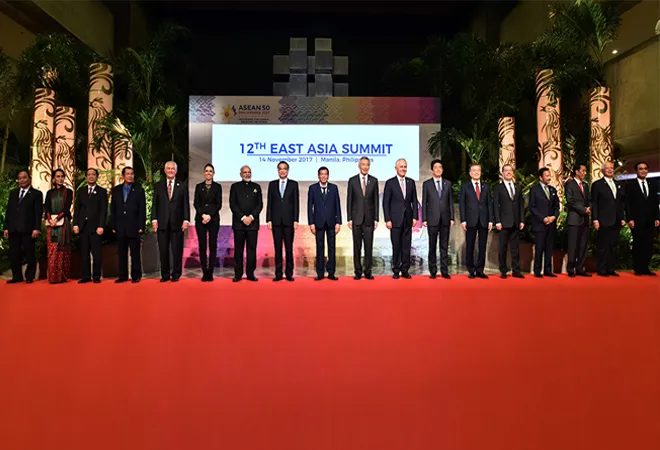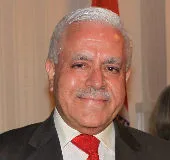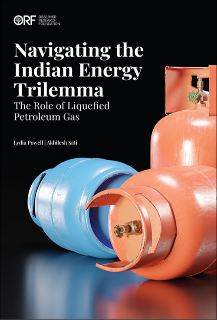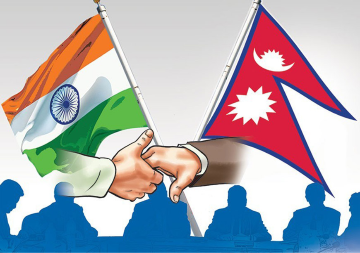
One of the most talked-about events on the sidelines of the recently-held East Asia Summit (EAS) in Manila, the capital of Philippines, was the meeting between officials of the "Quad" countries viz. the United States, Japan, Australia and India, on 12 November 2017. Revival of the "quad" structure was significant as this meeting took place exactly a decade after the last interaction in Manila. It was disbanded soon after its first meeting because of the strong displeasure conveyed by China and its criticism that the gathering was an attempt to gang up against it.
Similar rumblings from the dragon this time around which termed it as a "clique" have not register such a fallout although China is a much stronger country today than it was a decade ago. The four countries have articulated their resolve to continue the consultations under this format. All of them have, however, stated clearly that these confabulations are not directed against any third country, implying China. This assertion was, however, somewhat belied by the declaration issued by this relatively junior level meeting when it spoke about the need to ensure an open, free and inclusive "Indo-Pacific" region.
The expression "Indo-Pacific" has gained considerable traction recently by virtue of its frequent usage by US President Donald Trump during his East Asian tour in November 2017. Trump constantly used this formulation to emphasise that security and peace in the Pacific and Indian Ocean regions is a composite whole. This significantly enhanced the prominence and salience of India in promoting peace and prosperity in the region, much to the chagrin of China which has found itself more at ease with the expression "Asia-Pacific" which has thus far excluded India from discussions between East Asia and the US.
The expression "Indo-Pacific" has gained considerable traction recently by virtue of its frequent usage by US President Donald Trump during his East Asian tour in November 2017. Trump constantly used this formulation to emphasise that security and peace in the Pacific and Indian Ocean regions is a composite whole.
Soon after the "quad" interaction, the 15th meeting between foreign ministers of Russia, India and China (RIC) took place in New Delhi on 11 December, 2017. As reported in the media, this meeting should have taken place in April 2017, but the foreign minister of China did not respond positively to the invitation at that time to express China’s strong displeasure at the visit of His Holiness Dalai Lama to Arunachal Pradesh earlier that month. Significance of the RIC conclave was further enhanced as this was the first meeting between India and China in New Delhi after end of the 73-day Doklam standoff in end-August 2017. It provided an opportunity to India and China to discuss bilateral as well as regional and international developments and challenges.
In the aftermath of these meetings, some questions have been raised and doubts expressed about the efficacy and compatibility of India’s membership of these two fora. Some analysts have suggested that it is contradictory, if not counterproductive, for India to be a member of these groupings at the same time as they hold opposite views on several issues.
While it might be accurate to suggest that positions of these two groupings are at variance on several regional and global issues, it is equally, if not more, valid that both these organisations can help to advance India's national interest in strategic, political, security and economic terms.
At the same time, it needs to be recognised that the "quad" is at a very incipient, nascent stage. As mentioned above, the meeting in Manila was the first of its kind after a hiatus of 10 years. It was designed to be a cautious beginning at junior official level to test the waters of possible cooperation in the coming months and years. While the unstated rationale for this coming together was the growing political, military and economic might of China and its increased assertiveness and evident hegemonic ambitions, the countries were keen to tread cautiously because all of them have extensive trade and economic ties with China. Moreover, while all these countries might wish to act in concert whenever required and necessary to protect and promote their interests, they would be wary of acting in a manner which might unnecessarily provoke China.
It needs to be recognised that the "quad" is at a very incipient, nascent stage.
India is the only country that is common to both these groupings. While the other members of the "quad" are politically and ideologically opposed to China, in economic sphere they are closely interlinked and intermeshed with it. Similarly, Russia finds itself opposed to the western camp, particularly after the Ukraine crisis and annexation/accession of Crimea by/to Russia. India is the only member of the "quad" which has had historically strong and vibrant relations with the Soviet Union/Russia. Moreover, its partnership with Russia continues to grow and expand.
The idea of RIC was launched in end-1990s by then Russian Prime Minister Yevgeny Primakov as a response to the unipolar world with the United States as the unchallenged hegemon. Its clear objective was to promote establishment of a multipolar world. Meetings at foreign minister level were initiated in 2002 and have been held regularly on an annual basis since then. This is testimony to the utility that member countries see in such meetings although talk about establishing a multipolar world has receded.
The international scenario today is much different from what it was at the beginning of this century. The United States is no longer the unchallenged premier global power. Although it continues to enjoy pre-eminence in military capabilities, technology and innovation, it is being increasingly tested, particularly in the economic sphere, by China which is likely to overtake the US economy in 20 years, if not earlier. China will, however, need a much longer period to be able to seriously and comprehensively dethrone the US from its numero uno position in the world.
RIC provides a useful and desirable format to India to meet China and Russia at senior political level to discuss bilateral issues, both in terms of opportunities as well as challenges. Such meetings are not only expedient but also necessary, considering that India and China share a 3,500 km long disputed border between them. There are several issues of dissonance between India and China in regional as well as bilateral context. RIC hence provides a worthwhile platform to discuss issues like West Asia, Afghanistan, climate change, terrorism, regional connectivity, tensions on Korean Peninsula, etc.
RIC provides a useful and desirable format to India to meet China and Russia at senior political level to discuss bilateral issues, both in terms of opportunities as well as challenges.
As per the joint statement issued by RIC ministers after their meeting on 11 December, 2017, the "trilateral format is a platform to foster closer dialogue and practical cooperation in identified areas among the three countries." Cooperation gets limited to those issues on which views and interests of the three countries converge. However, even in cases where countries might hold divergent views, some commonly agreed formulations become possible. For instance, the text on maritime security in the December 11 communiqué reads:
Recognising the growing importance of maritime-trade in an increasingly globalised world, we support freedom of navigation and overflight rights based on the principles of international law, particularly UNCLOS.
This formulation suffers from the drawback that it does not mention the South China Sea but enjoys the advantage of stating the primacy of international law and norms, particularly UNCLOS, in settling maritime disputes.
On the issue of countering terrorism, the declaration states:
We underline the primary and leading role and responsibility of States in preventing and countering terrorism and extremism and reiterate that all States should take adequate measures to prevent terrorist activities from their territory…We stress that those committing, organizing, inciting or supporting terrorist acts must be held accountable and brought to justice in accordance with the obligations under international law, including the principle of 'extradite or prosecute' as well as the applicable domestic legislations…We agree to strengthen cooperation to take decisive and concerted actions against globally proscribed terrorists and terror entities. We condemn all forms of terrorism and all terrorists, terror entities and organizations listed by the UN Security Council.
As is evident, the challenge here is to make the countries abide by their commitments, fully and sincerely. Thus far, honest execution of obligations has surfaced as the biggest hurdle.
The future course as far as the "quad" format is concerned is somewhat unclear. The recent meeting in Manila has, however, served a purpose in sending a clear message to China that its aggressiveness and disregard for international law and norms will not go unchallenged. As in the past, China is likely to flex its muscle, particularly to break the grouping by rupturing the weakest link which in the earlier instance was Australia. As the Australian PM recently said, it is for the first time that its security provider and economic partner are not the same. This presents formidable challenges to it which it will have to find ways to confront and deal with.
Revival of the "quad" will be viable if it is not just symbolic, but acquires substance. That will demand deliberating upon the strategic and economic contours in the region, and concrete cooperation. The countries will need to meet regularly and frequently on the basis of a set, evolving agenda, spelling to domestic and external audiences about the purpose and utility of such a grouping. It should also expect and be prepared for a pushback from China.
Simultaneous membership of these two formats serves India's interests eminently. Not only is it not incompatible, active participation in the two is desirable and essential for India. This is a natural culmination of the policy of proactive and purposeful multi-alignment that India has been pursuing under the stewardship of Prime Minister Modi for the last three and a half years.
The views expressed above belong to the author(s). ORF research and analyses now available on Telegram! Click here to access our curated content — blogs, longforms and interviews.




 PREV
PREV


